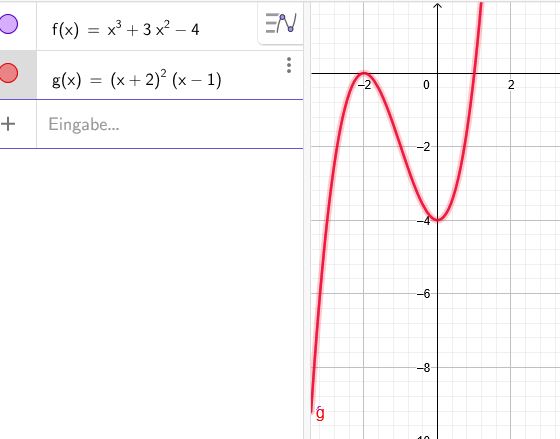\(f(x)=x^3+3x^2-4\)
\(f´(x)=3x^2+6x\) → \(3x^2+6x=0\)→ \(x^2+2x=0\)
\(x_1=0\) \(f(0)=-4\) Tiefpunkt
\(x_2=-2\) \(f(-2)=0\) Hochpunkt als doppelte Nullstelle
\(x^3+3x^2-4=(x+2)^2*(x-N)=x^3+4x^2-Nx^2+4x-4Nx-4N\)
\(x^3+3x^2-4=x^3+x^2*(4-N)+x*(4-4N)-4N\)
Koeffizientenvergleich:
1.)
\(4-N)=3\) → \(N=1\)
2.)
\(4-4N=0 \)→ \(N=1\)
3.)
\(-4N=-4 \)→ \(N=1\)
\(f(x)=x^3+3x^2-4=(x+2)^2*(x-1)\)
Polynomdivision ist auch noch ein gangbarer Weg:
(x^3+3x^2-4):(x+2)^2=(x^3+3x^2-4):(x^2+4x+4)=...
